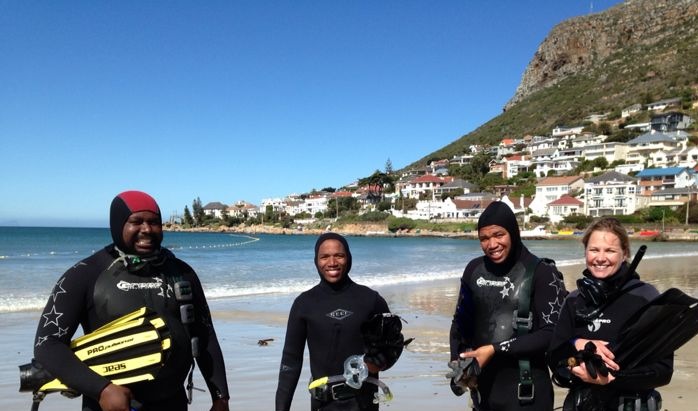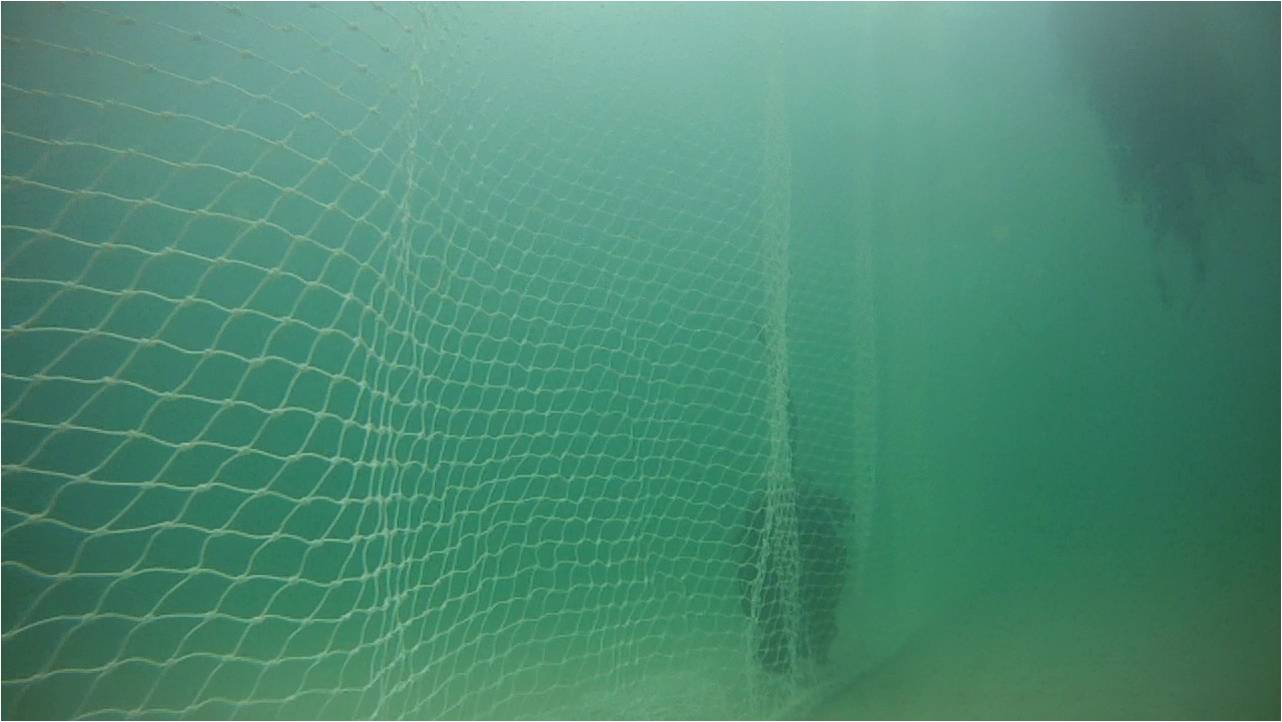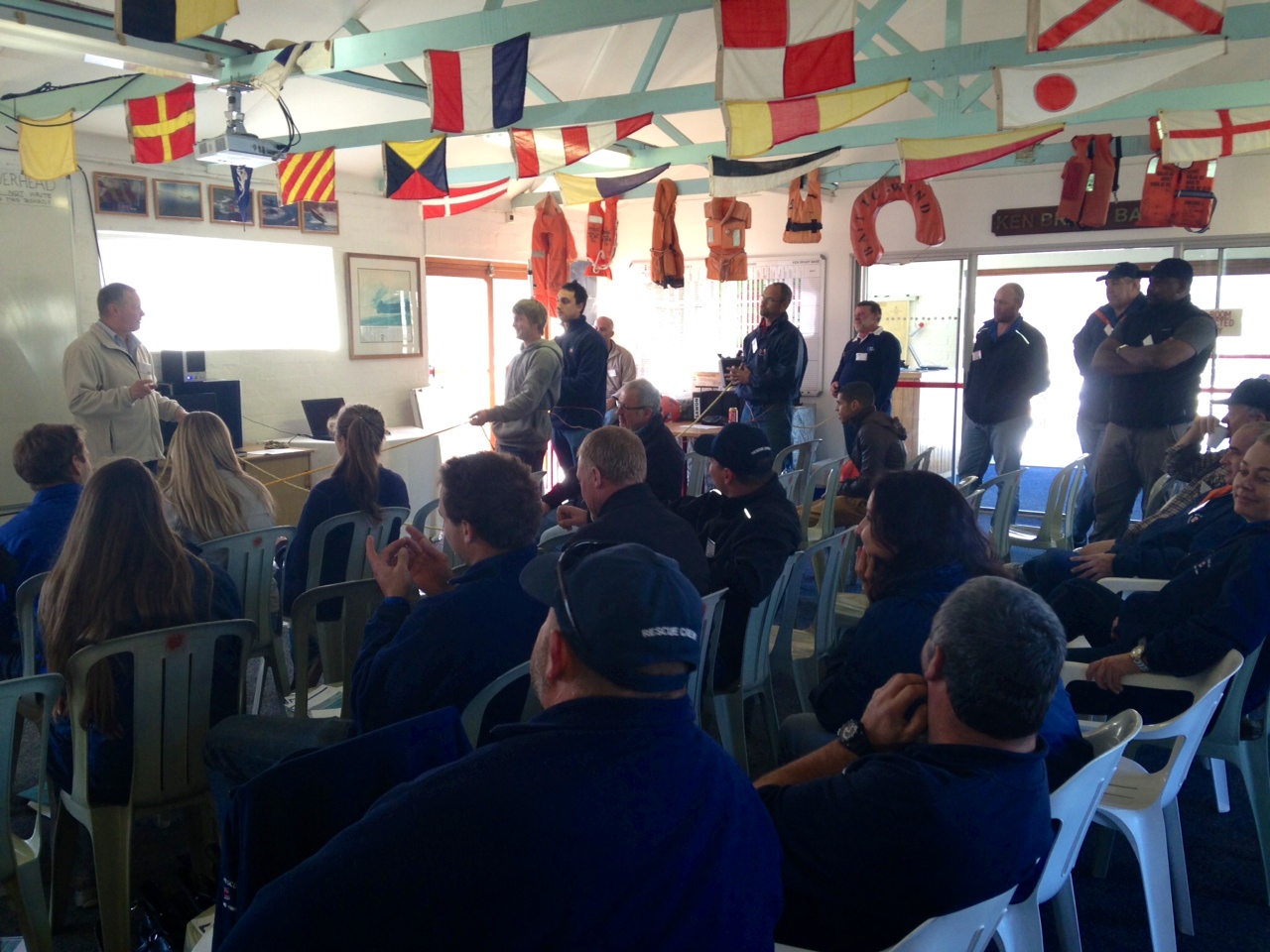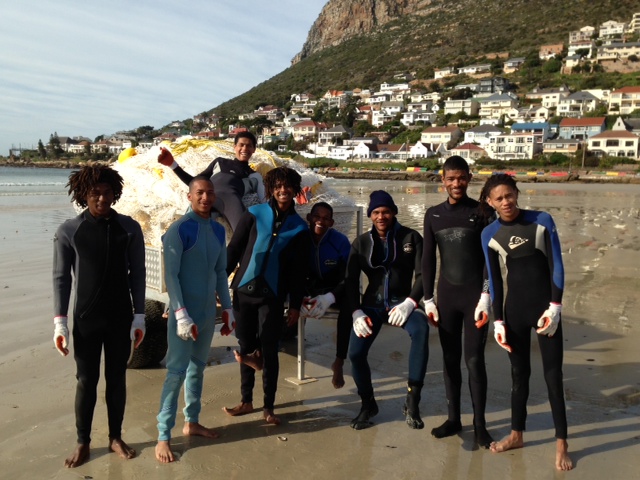Update on the Fish Hoek exclusion net project
Shark Spotters’ core mission is to find pro-active, environmentally friendly solutions to reduce shark-human conflict, for the benefit of people and sharks. The trial exclusion net project fits this mandate. In March 2013, Shark Spotters and the City of Cape Town commenced the trial of a shark exclusion net in Fish Hoek. Exclusion nets are environmentally friendly alternatives to traditional shark nets (http://sharkspotters.org.za/shark-nets-vs-exculsion-nets). The exclusion net forms a physical barrier to prevent sharks from entering the ‘exclusion zone’ and in this case is designed to be deployed and retrieved on a daily basis. This means that whenever the exclusion net is in the water, it is under full time observation. For more background information read this blog http://sharkspotters.org.za/city-commences-its-exclusion-net-trial-at-fish-hoek-beach-press-release).
Over the winter period we have been deploying the net on an ad-hoc basis to test different configurations and practice the logistics of setting and retrieving the net. This has by no means an easy task! To date, we have deployed the net a total of 18 times. The net has undergone a number of different alterations e.g. adding additional floats to increase buoyancy and vertical positioning in water column and improving the fastening system. These have improved the efficiency of the daily operations and further reduced any risk of entanglements of any animals.
The net crew feed the net off the trailer in a ‘sausage’ configuration to facilitate deployment and retrieval. Credit Shark Spotters
Manoeuvring the exclusion net in its fully deployed configuration is very difficult, due to the drag acting on the large surface area and because of the weighted bottom. Therefore our deployment and retrieval techniques involve manoeuvring the net while it’s bunched up along its length in a ‘sausage’ shape. Once it has been fed out from the trailer by the net crew and pulled to the catwalk by the boat crew, it is unclipped along its length to fall down like a curtain.
the boat crew pulls the net out in the ‘sausage’ configuration, connects it to the pivot buoy and takes it to the catwalk. Credit Shark Spotters
Once fully deployed it acts as a complete physical barrier, extending from the surface where it is held afloat with buoys, down to the seafloor where it is held down by leaded ropes. It completely encloses an area from Jaggers Walk onto the beach in front of the Shark Spotters cabin, covering a stretch of beach of approximately 200m.
The retrieval involves ‘lifting up the curtain’ again, clipping the bottom to the top, resulting in the ‘sausage’ configuration, disconnecting it from the catwalk and buoy, and then pulling it towards the beach, back onto the trailer.
Once the net has been connected to the pivot buoy and catwalk, the boat crew unfasten the clips along its length and the net drops down in place like a curtain. Credit Shark Spotters
Our field manager, Monwabisi and spotter supervisor, Tino have recently completed their skippers tickets and together with another spotter, Donovan (who has trained as boat crew) they are a formidable team, who operate the rubber duck and co-ordinate the deployments.
We have trained a team of previously unemployed individuals from Mountain View as our dedicated net crew, and their enthusiasm and dedication are unrivalled! They have taken on the challenge of implementing something never tried anywhere in the world before and are a great motivation to us all! Present at every deployment are a member of senior management from Shark Spotters, either the project manager or research manager, as well as a representative from the City of Cape Town.

A vital component of the project is monitoring and research around any impacts of the net and the net is inspected above and below the water. Credit Shark Spotters
An important part of the trial of the net is monitoring and collecting all relevant information to evaluate its effectiveness, not only as a shark safety device, but also any environmental impacts, no matter how big or small. The key objectives are to determine the effectiveness as a safety device, determine the weather and sea conditions which allow for deployment, record impacts on trek net fishermen, monitor all interactions between marine life and the exclusion net, monitor any impact on the physical environment and determine whether it will be used by the public and life-saving clubs. The information will be scientifically analysed and reported openly to the general public.

The net forms a physical barrier between the seafloor and surface and the small mesh size (4.5 x 4.5 cm) significantly reduces the likelihood of entanglements with any marine animals. Removing the net at night time reduces the risk even further. Credit Shark Spotters
Every effort has been made to reduce the likelihood of a marine animal, whether it is a shark, marine mammal, bird, small fish or other critters, becoming entangled in the net. However, any foreign object in the sea poses a potential entanglement risk. Therefore, five members of the Shark Spotters team, and two members of the City of Cape Town, have received disentanglement training from the Department of Environmental Affairs and have now become members of the South African Whale Disentanglement Network (SAWDN). Should an entanglement occur the Shark Spotters team have the correct tools and are trained to react appropriately to work with SAWDN and the Dolphin Action and Protection Group (DAPG) to follow disentanglement protocols which have been informed by international best practice (http://www.dapg.org.za/sawdn.htm). However, our main approach will be a pro-active one to prevent any entanglements in the first place and thus we have developed a number of emergency protocols, specific to different groups of animals which we will share with you in another blog post soon.

A pro-active approach to preventing any disentanglement has been the primary aim. Representatives from Shark Spotters and the City have undergone disentanglement training from DEA, SAWDN and DAPG and have developed emergency protocols to prevent any negative interactions. Credit Shark Spotters
While the deployments are still being done on an ad-hoc basis due to reaching our objective of testing different configurations, it is our aim to be fully operational by the beginning of the September school holidays. The net will then be deployed every weekend, public holiday and school holiday over the summer season, weather permitting. We will keep you updated via our Facebook (www.facebook.com/Sharkspotters) and Twitter sites (@SharkSpotters). To date, we are pleased with the progress and are optimistic about the project.

The project has received tremendous support from various organisation and individuals in addition to those already mentioned. A warm thank you to the Fish Hoek Life Saving Club and the public for their overall support so far. The NSRI Strandfontein trained our boat crew in surf launching and boat skills. Reef Wetsuits generously sponsored all the boat crews gear, and a Learn to Dive Today, Shark Explorers, Isaac February and Brad Smith donated old wetsuits and booties to keep the net crew warm in the cold winter water! Many thanks are due to the KZN Sharks Board who shared their expertise. Credit Shark Spotters
